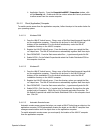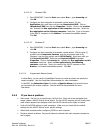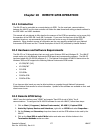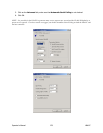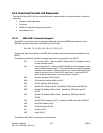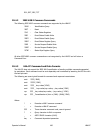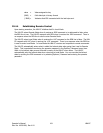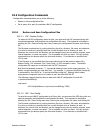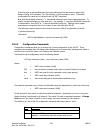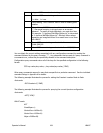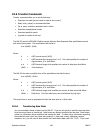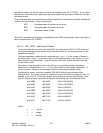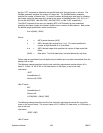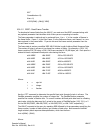10.5 Configuration Commands
Configuration commands allow you to do the following:
Restore or Save configuration files
Set or query all or part of a particular LBA-PC configuration
10.5.1 Restore and Save Configuration Files
10.5.1.1 LDC - Restore Config…
To restore a LBA-PC configuration stored on disk, you must send the LDC command along with
an optional parameter that identifies the configuration file name. This command is identical to
selecting the File | Restore Config menu item, entering the configuration file name, and clicking
OK.
The file name is optional and is a string describing the drive, directory, file name, and extension.
If no drive or directory is specified then the current Windows drive or directory is used. In
Windows, the current drive and directory can be changed at any time by another program, some
internal operation, or some user action. This is probably not what you want. We very strongly
recommend that you always specify the drive and directory. If no extension is specified then
.CFG is used.
If the file name is not specified then the current value from the last previous restore File |
Restore Config., LDC command, File | Save Config., or SDC command is used. The default
configuration file name can be retrieved with the LDC? command.
Note that the backslash character, “\”, has special meaning known as an escape sequence. To
specify a single backslash you must send two. For example
, “c:\\spiricon\\lba300pc\\config.cfg”
is interpreted by the LBA-PC as, “c:\spiricon\lba300pc\config.cfg”.
Although other escape
sequences are recognized there is no reason to ever use them with LBA-PC.
The following example describes how to restore the LBA-PC configuration from the file
c:\spiricon\cohu4800.cfg.
Host sends
:LDC ConfigFileName=c:\\spiricon\\cohu4800.cfg(^END)
10.5.1.2 SDC - Save Config…
To save the current LBA-PC configuration to a file on disk, you must send the SDC along with any
optional parameter that identifies the configuration file name. This command is identical to
selecting the File | Save Config menu item, entering the configuration file name, and clicking OK.
The file name is optional and is a string describing the drive, directory, file name, and extension.
If no drive or directory is specified then the current Windows drive or directory is used. In
Windows, the current drive and directory can be changed at any time by another program, some
internal operation, or some user action. This is probably not what you want. We very strongly
recommend that you always specify the drive and directory. If no extension is specified then
.CFG is used.
Operator’s Manual LBA-PC
182



